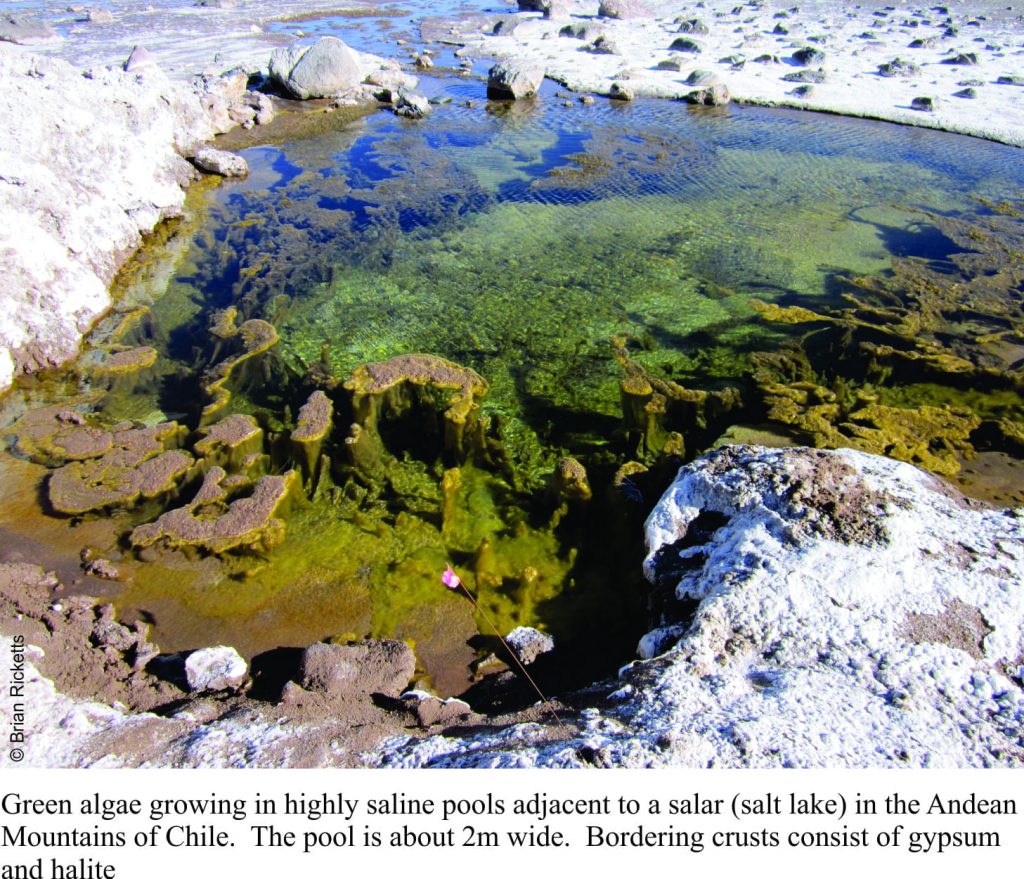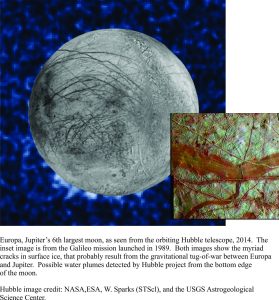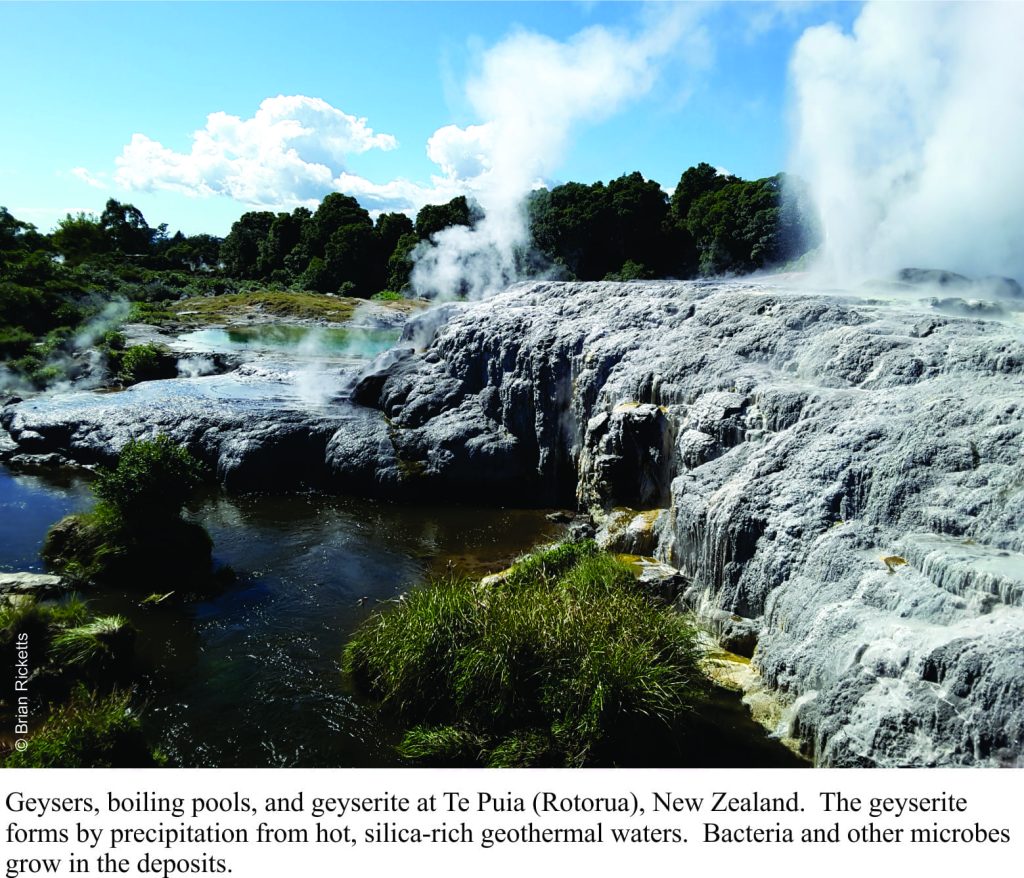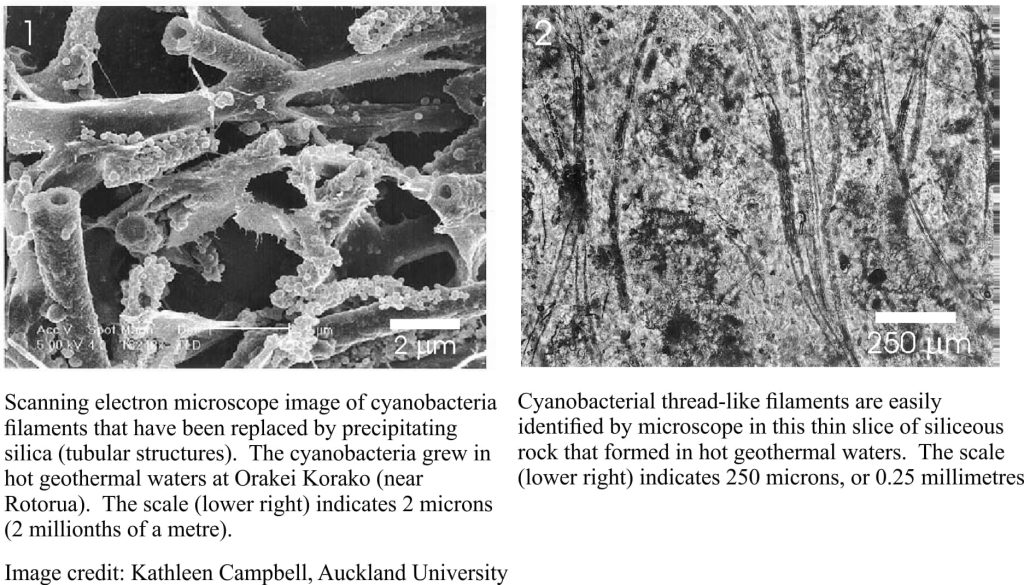Extremophiles – life forms that live in really hazardous conditions.
Extreme events are fascinating. Extreme sports may give us a vicarious thrill, at least until something goes awry at which point we might comment about the foolishness of the act. Extremes in the natural world are the stuff of movies; asteroids, tsunamis, tornadoes, plagues. Perhaps our morbid fascination with such events derives from the realization that they can be real.
Over the last 2-3 decades, science too has developed a fascination for extreme living, for creatures that happily thrive in conditions that most other life forms, including us, would find inclement. They are extremophiles, life forms like bacteria, algae and small critters that can endure extremes of temperature, pressure (e.g. deep sea black smokers), radioactivity, darkness, low levels of oxygen, high acidity or alkalinity, and even lack of water. The variety of extreme environments in which these life forms have evolved is, from a scientific perspective, quite stunning in that it provides us with many different analogues for our quest to understand the origin of life on earth, and whether life can exist on other planets. A few examples are noted below.
Nature’s deep-freeze; nature’s caldron
Lake Untersee, in East Antarctic, is up to 160m deep, has a perennially frozen ice cover several metres thick and beneath the ice, clear water with a pH of 10.4 and constant temperature of 4-5oC. Modern stromatolites are growing, quite happily, on the lake bottom; these are laminated or algal mat-like structures that in this case are composed of cyanobacteria, the same kind of bacteria that flourished during the first 3 billion years of earth history.
Extreme polar deserts in the McMurdo region of Antarctica, the Dry Valleys, also are home to a variety of algae, cyanobacteria, mosses, lichens and a few microscopic invertebrates such as nematodes. Creature comforts here include average annual temperatures ranging from -14o to -30oC (summer temperatures hover around zero), annual precipitation less than 100mm very little of which is liquid water, and katabatic winds up to 200km/hour (katabatic winds are high density air flows that move downslope under the influence of gravity). The dry valleys have been used by NASA as testing grounds for Martian exploration. The Andean mountains east of Atacama desert (northern Chile), include some of the driest places on earth. Salars (salt lakes) here support diverse microbes, green algae, and small crustaceans like brine shrimp. Unlike the Antarctic lakes, the Atacama salars, particularly those in the high mountains, have a thick crust of gypsum and halite that cover waters that are 5-10 times more saline than seawater. Temperature extremes for the mountain salars range from about +20oC to -20oC. This is also where Flamingos congregate to breed every summer – a spectacular sight.
The Andean mountains east of Atacama desert (northern Chile), include some of the driest places on earth. Salars (salt lakes) here support diverse microbes, green algae, and small crustaceans like brine shrimp. Unlike the Antarctic lakes, the Atacama salars, particularly those in the high mountains, have a thick crust of gypsum and halite that cover waters that are 5-10 times more saline than seawater. Temperature extremes for the mountain salars range from about +20oC to -20oC. This is also where Flamingos congregate to breed every summer – a spectacular sight.
At the opposite end of the temperature scale are the boiling geothermal hot pools, geysers, and mud pools. In New Zealand, these silica-rich waters are heated by magma chambers only a few kilometres beneath the surface (this is the Taupo Volcanic Zone). Specialized microbes are known to form at boiling temperatures (100-105oC) and are also quite prolific in waters 60-80oC. The biota at the highest temperatures tend to be a bit sparse (I guess there are not many who really want to live there), but they can be detected from organic biomarker molecules and some of the microscopic silica structures that precipitate from hot water. The siliceous rock that forms in these extreme environments is called geyserite (note that deposits from hot carbonate-rich waters are called travertine, a particular kind of limestone). Professor Kathy Campbell (Auckland University) and her colleagues have written an excellent technical review of Geyserite (world-wide). Their studies have also used DNA sequencing to identify and classify the different microbes.
Life in the distant past; life on distant planets
Questions about the beginnings of life and whether life exists anywhere else in the universe, invite all manner of responses; wonder, mystery, how, when, and from some, ridicule. From a scientific perspective, we search for answers in many ways. Extremophiles have assumed some importance in this regard.
Science’s fascination with extremophiles has several threads. The metabolism of these sporty life forms provides information on how they thrive, for example in deep-freeze (they produce their own antifreeze proteins), or oxygen-deficient conditions where they derive their metabolic energy from dissolved sulphur (sulphates) and iron compounds. Studies of extremophile enzymes are already providing technological dividends (making biofuels, gobbling up toxic mining or radioactive waste), and medical research that makes use of extremophile antibiotic, antiviral and antitumor properties.
Life beyond the extremes of our own existence on earth may provide clues to its beginnings long ago. We have successfully identified primitive forms of bacteria as far back as 3.4 billion years. Given that the earth is about 4.6 billion years old, and that water had accumulated perhaps 300-400 million years later, it is conceivable that life forming processes were active during these very early times. The environmental conditions then were extreme. There was no oxygen, and therefore no protective ozone layer – UV radiation was extreme. Surface temperatures were probably higher; water vapour and carbon dioxide in the ancient atmosphere probably provided significant greenhouse conditions. The mere existence of extremophiles today tells us that the most primitive life forms could have utilized the extreme conditions during the earliest part of earth history.
The possible development of primitive life forms elsewhere in our solar system is not a huge step in logic, although empirical verification is a pretty big hurdle. Mars, the nearest and obvious choice for a first look, does have some of the ingredients that we think are essential for life; it has an atmosphere with carbon dioxide, albeit at much lower pressures than earth, it shows clear evidence for water in its distant past, such as river valley landscapes and minerals like calcium sulphate. It is cold, averaging about -53oC at the surface but not so cold to exclude extremophiles. There is even conjecture that Europa, one of Jupiter’s small moons (but not much smaller than earth), could harbor if not life forms, then some of the molecular ingredients that might lead to primitive life forms. Europa is thought to be an ice-covered moon with liquid water beneath. The surface ice is contorted by Jupiter’s massive gravity field, resulting in the large cracks seen in the NASA Galileo mission image. There is also some evidence for massive water plumes extending geyser-like into space. At the equator, the temperature is about -160oC; at the poles -220oC, far too cold for even the most extreme extremophiles. However, gravitational friction may keep the inner part of Europa’s oceans liquid in which case temperatures may by more conducive to life-forming processes.
There is even conjecture that Europa, one of Jupiter’s small moons (but not much smaller than earth), could harbor if not life forms, then some of the molecular ingredients that might lead to primitive life forms. Europa is thought to be an ice-covered moon with liquid water beneath. The surface ice is contorted by Jupiter’s massive gravity field, resulting in the large cracks seen in the NASA Galileo mission image. There is also some evidence for massive water plumes extending geyser-like into space. At the equator, the temperature is about -160oC; at the poles -220oC, far too cold for even the most extreme extremophiles. However, gravitational friction may keep the inner part of Europa’s oceans liquid in which case temperatures may by more conducive to life-forming processes.
Postscript
Some of these conjectures may seem a bit far-fetched. But it really wasn’t so long ago that people believed the earth to be 6000 years old (the famous Bishop Ussher calculation – some still do believe this), or that bacteria could not survive, let alone proliferate, in boiling water. In science, the absurd frequently turns out to be real.
A technical overview of extremophiles (PDF) can be downloaded here
Here are a couple of posts on related topics: Life on Mars; what are we searching for, and Subcutaneous oceans on distant moons; Enceladus and Europa



















